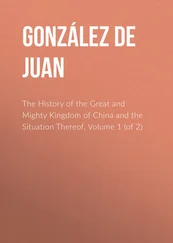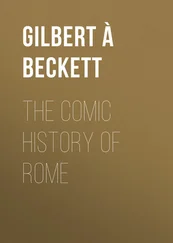Theodor Mommsen - The History of Rome. Book II
Здесь есть возможность читать онлайн «Theodor Mommsen - The History of Rome. Book II» весь текст электронной книги совершенно бесплатно (целиком полную версию без сокращений). В некоторых случаях можно слушать аудио, скачать через торрент в формате fb2 и присутствует краткое содержание. Жанр: История, Культурология, на английском языке. Описание произведения, (предисловие) а так же отзывы посетителей доступны на портале библиотеки ЛибКат.
- Название:The History of Rome. Book II
- Автор:
- Жанр:
- Год:неизвестен
- ISBN:нет данных
- Рейтинг книги:3 / 5. Голосов: 1
-
Избранное:Добавить в избранное
- Отзывы:
-
Ваша оценка:
- 60
- 1
- 2
- 3
- 4
- 5
The History of Rome. Book II: краткое содержание, описание и аннотация
Предлагаем к чтению аннотацию, описание, краткое содержание или предисловие (зависит от того, что написал сам автор книги «The History of Rome. Book II»). Если вы не нашли необходимую информацию о книге — напишите в комментариях, мы постараемся отыскать её.
The History of Rome. Book II — читать онлайн бесплатно полную книгу (весь текст) целиком
Ниже представлен текст книги, разбитый по страницам. Система сохранения места последней прочитанной страницы, позволяет с удобством читать онлайн бесплатно книгу «The History of Rome. Book II», без необходимости каждый раз заново искать на чём Вы остановились. Поставьте закладку, и сможете в любой момент перейти на страницу, на которой закончили чтение.
Интервал:
Закладка:
version="1.0" encoding="utf-8"?> sci_history sci_culture Theodor Mommsen The History of Rome. Book II
The History of Rome by Theodor Mommsen, translated by William Purdie Dickson
en de Benjamin Shoomow FB Writer v1.1 22 July 2009 8836606D-E948-41F6-84AA-9BA20DBF9DC0 1.0Ver 1.0 - Файл скомпилирован из материалов, взятых в библиотеке проекта Гутенберг (The Project Gutenberg, www.gutenberg.net). Изначальный текст подготовлен Дэвидом Цепонисом (David Ceponis). Удалены лишние пробелы, исправлены немногочисленные баги, слова, ранее выделенные в виде -xxx- или --xxx-- теперь выделены курсивом.
The History of Rome. Book II
From the Abolition of the Monarchy in Rome to the Union of Italy
by THEODOR MOMMSEN
Translated with the Sanction of the Author by William Purdie Dickson, D.D., LL.D. Professor of Divinity in the University of Glasgow
A New Edition Revised Throughout and Embodying Recent Additions
Preparer's Note
This work contains many literal citations of and references to foreign words, sounds, and alphabetic symbols drawn from many languages, including Gothic and Phoenician, but chiefly Latin and Greek. This English Gutenberg edition, constrained to the characters of 7-bit ASCII code, adopts the following orthographic conventions:
1) Except for Greek, all literally cited non-English words that do not refer to texts cited as academic references, words that in the source manuscript appear italicized, are rendered with a single preceding, and a single following dash; thus, -xxxx-.
2) Greek words, first transliterated into Roman alphabetic equivalents, are rendered with a preceding and a following double-dash; thus, --xxxx--. Note that in some cases the root word itself is a compound form such as xxx-xxxx, and is rendered as --xxx-xxx--
3) Simple unideographic references to vocalic sounds, single letters, or alphabeic dipthongs; and prefixes, suffixes, and syllabic references are represented by a single preceding dash; thus, -x, or -xxx.
4) (Especially for the complex discussion of alphabetic evolution in Ch. XIV: Measuring And Writing). Ideographic references, meaning pointers to the form of representation itself rather than to its content, are represented as -"id:xxxx"-. "id:" stands for "ideograph", and indicates that the reader should form a picture based on the following "xxxx"; which may be a single symbol, a word, or an attempt at a picture composed of ASCII characters. E. g. -"id:GAMMA gamma"-- indicates an uppercase Greek gamma-form followed by the form in lowercase. Some such exotic parsing as this is necessary to explain alphabetic development because a single symbol may have been used for a number of sounds in a number of languages, or even for a number of sounds in the same language at different times. Thus, -"id:GAMMA gamma" might very well refer to a Phoenician construct that in appearance resembles the form that eventually stabilized as an uppercase Greek "gamma" juxtaposed to one of lowercase. Also, a construct such as -"id:E" indicates a symbol that with ASCII resembles most closely a Roman uppercase "E", but, in fact, is actually drawn more crudely.
5) Dr. Mommsen has given his dates in terms of Roman usage, A.U.C.; that is, from the founding of Rome, conventionally taken to be 753 B. C. The preparer of this document, has appended to the end of each volume a table of conversion between the two systems.
CONTENTS
BOOK II: From the Abolition of the Monarchy in Rome to the Union of Italy
I. Change of the Constitution - Limitation of the Power of the Magistrate
II. The Tribunate of the Plebs and the Decemvirate
III. The Equalization of the Orders, and the New Aristocracy
IV. Fall of the Etruscan Power - the Celts
V. Subjugation of the Latins and Campanians by Rome
VI. Struggle of the Italians against Rome
VII. Struggle Between Pyrrhus and Rome, and Union of Italy
VIII. Law - Religion - Military System - Economic Condition - Nationality
IX. Art and Science
BOOK SECOND
From the Abolition of the Monarchy in Rome to the Union of Italy
dei ouk ekpleittein ton suggraphea terateuomenon dia teis iotopias tous entugchanontas.
Polybius.CHAPTER I
Change of the Constitution - Limitation of the Power of the Magistrate
The strict conception of the unity and omnipotence of the state in all matters pertaining to it, which was the central principle of the Italian constitutions, placed in the hands of the single president nominated for life a formidable power, which was felt doubtless by the enemies of the land, but was not less heavily felt by its citizens. Abuse and oppression could not fail to ensue, and, as a necessary consequence, efforts were made to lessen that power. It was, however, the grand distinction of the endeavours after reform and the revolutions in Rome, that there was no attempt either to impose limitations on the community as such or even to deprive it of corresponding organs of expression - that there never was any endeavour to assert the so-called natural rights of the individual in contradistinction to the community - that, on the contrary, the attack was wholly directed against the form in which the community was represented. From the times of the Tarquins down to those of the Gracchi the cry of the party of progress in Rome was not for limitation of the power of the state, but for limitation of the power of the magistrates: nor amidst that cry was the truth ever forgotten, that the people ought not to govern, but to be governed.
This struggle was carried on within the burgess-body. Side by side with it another movement developed itself - the cry of the non-burgesses for equality of political privileges. Under this head are included the agitations of the plebeians, the Latins, the Italians, and the freedmen, all of whom - whether they may have borne the name of burgesses, as did the plebeians and the freedmen, or not, as was the case with the Latins and Italians - were destitute of, and desired, political equality.
A third distinction was one of a still more general nature; the distinction between the wealthy and the poor, especially such as had been dispossessed or were endangered in possession. The legal and political relations of Rome led to the rise of a numerous class of farmers - partly small proprietors who were dependent on the mercy of the capitalist, partly small temporary lessees who were dependent on the mercy of the landlord--and in many instances deprived individuals as well as whole communities of the lands which they held, without affecting their personal freedom. By these means the agricultural proletariate became at an early period so powerful as to have a material influence on the destinies of the community. The urban proletariate did not acquire political importance till a much later epoch.
On these distinctions hinged the internal history of Rome, and, as may be presumed, not less the history - totally lost to us - of the other Italian communities. The political movement within the fully-privileged burgess-body, the warfare between the excluded and excluding classes, and the social conflicts between the possessors and the non-possessors of land - variously as they crossed and interlaced, and singular as were the alliances they often produced - were nevertheless essentially and fundamentally distinct.
As the Servian reform, which placed the
Читать дальшеИнтервал:
Закладка:
Похожие книги на «The History of Rome. Book II»
Представляем Вашему вниманию похожие книги на «The History of Rome. Book II» списком для выбора. Мы отобрали схожую по названию и смыслу литературу в надежде предоставить читателям больше вариантов отыскать новые, интересные, ещё непрочитанные произведения.
Обсуждение, отзывы о книге «The History of Rome. Book II» и просто собственные мнения читателей. Оставьте ваши комментарии, напишите, что Вы думаете о произведении, его смысле или главных героях. Укажите что конкретно понравилось, а что нет, и почему Вы так считаете.










